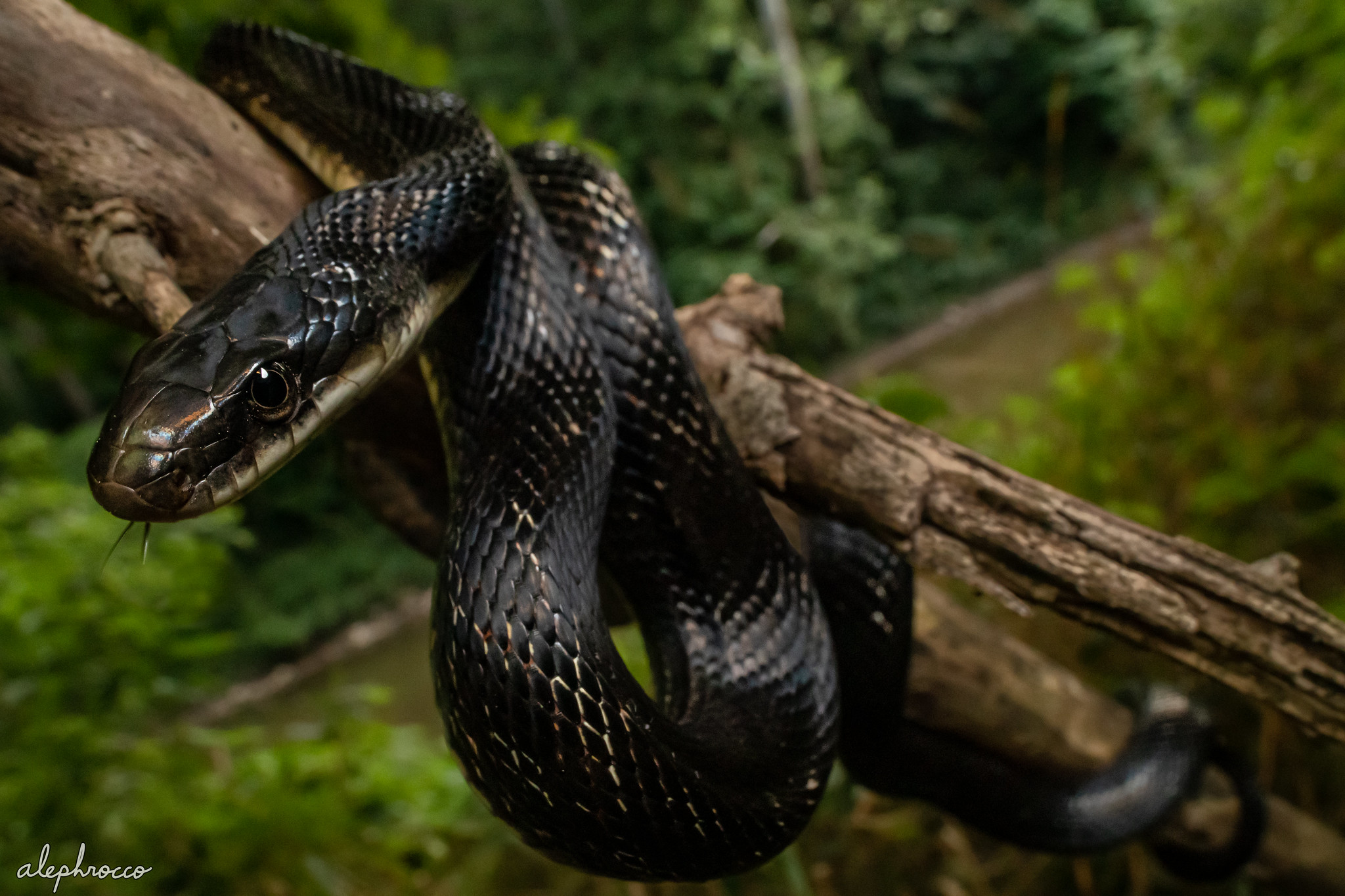Snakes are fascinating creatures whose behaviors can sometimes be misunderstood by even experienced owners. While they don’t express emotions in ways familiar to mammal owners, snakes do display distinct behavioral patterns that indicate their state of mind. Learning to differentiate between curiosity and caution in your serpentine companion is crucial for building trust and ensuring proper care. These subtle behavioral distinctions help you respond appropriately to your snake’s needs, creating a more harmonious relationship. In this comprehensive guide, we’ll explore the telltale signs that reveal whether your snake is inquisitively exploring or feeling threatened and defensive.
Understanding Snake Body Language Basics

Snake communication relies heavily on body posture, movement patterns, and subtle physiological changes rather than facial expressions. Unlike mammals with their expressive faces, snakes communicate primarily through how they position their bodies and how they move through their environment. A relaxed snake typically displays smooth, deliberate movements with a body that’s neither tensed nor coiled defensively. Learning these baseline behaviors is essential before attempting to distinguish between curiosity and caution, as what might appear threatening to us could simply be normal behavior for your particular species. Each snake species has its own behavioral nuances, so researching your specific pet’s natural tendencies provides valuable context for interpretation.
The Curious Snake: Tongue Flicking Patterns
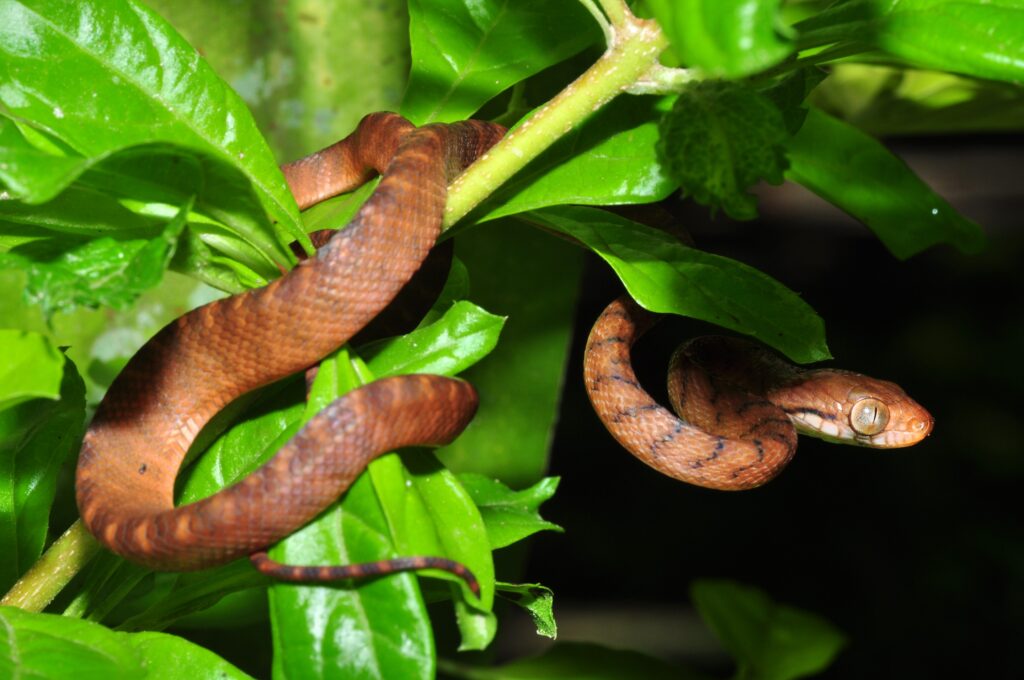
A curious snake typically exhibits frequent, rhythmic tongue flicking as it explores its surroundings. This behavior is fundamentally different from the rapid, agitated tongue flicking seen in defensive snakes. The tongue serves as the snake’s primary sensory organ, collecting chemical particles from the air and transferring them to the Jacobson’s organ in the roof of the mouth for analysis. When your snake is curious, this tongue movement appears deliberate and methodical, often accompanied by the snake extending its head forward to investigate new scents. You might notice your snake flicking its tongue more rapidly when encountering a new object or unfamiliar smell, indicating heightened interest rather than fear. This sensory exploration helps your snake build a chemical “map” of its environment and is a healthy sign of engagement with its surroundings.
Cautious Snake: Defensive Body Posturing
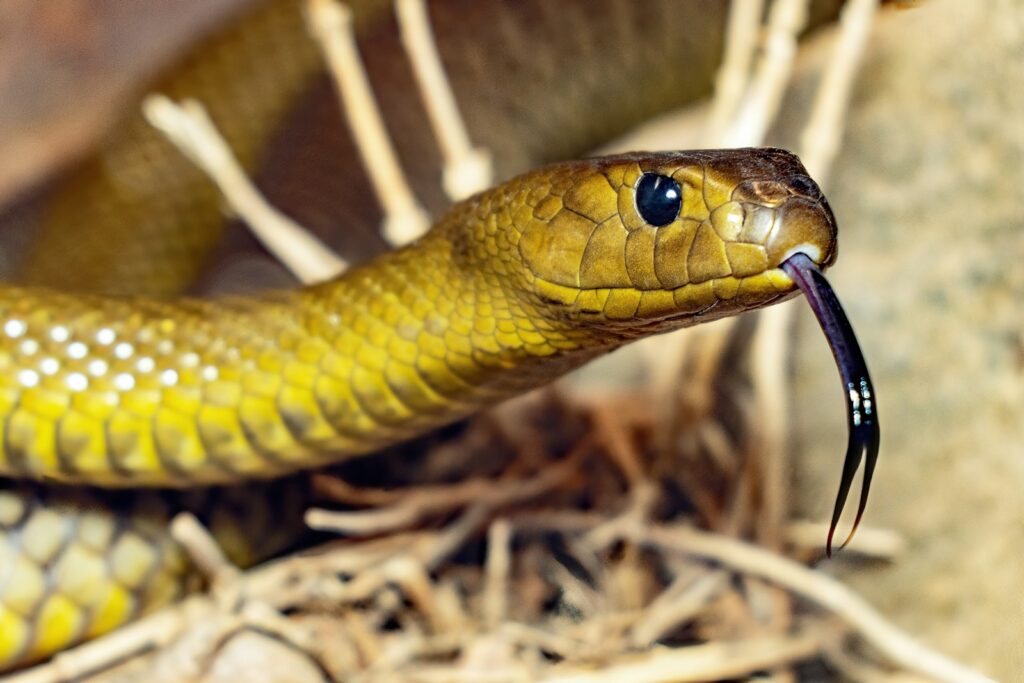
When feeling threatened, snakes display distinctive defensive postures that clearly signal caution. These postures typically involve some form of body compression, where the snake may flatten its neck (particularly pronounced in cobras and other elapids) or coil tightly with the head positioned centrally or slightly raised. The body tension is visibly different from a relaxed state, with muscles clearly engaged and prepared for potential movement. Some species like ball pythons may tuck their heads beneath coiled bodies when feeling extremely threatened, while others might form an S-shape ready to strike if the perceived threat advances. These defensive postures are energy-intensive and stressful for the snake, so understanding these signals allows you to reduce stressors in their environment. A consistently defensive snake indicates something in its habitat or handling routine needs adjustment.
Movement Patterns: Exploring vs. Retreating
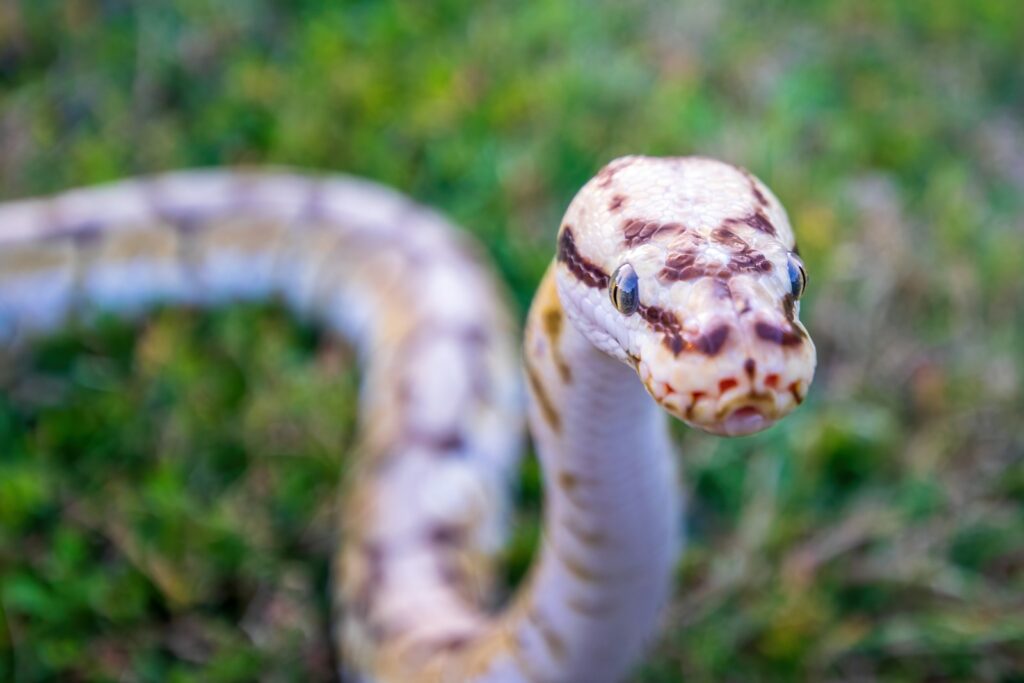
The way your snake moves provides significant clues about whether it’s exploring curiously or moving cautiously. A curious snake typically displays smooth, confident movement patterns as it investigates its environment, often moving in a straight line or gentle curves toward objects of interest. This exploratory movement lacks the jerky, hesitant quality seen in cautious snakes. Conversely, a snake feeling threatened may exhibit stop-start movements, frequent direction changes, or attempt to retreat toward hiding spots quickly. Some species when very frightened may even move backward while facing the perceived threat, keeping their defensive capabilities oriented toward danger. The speed of movement also differs significantly, with curious exploration typically happening at a moderate, deliberate pace while fearful movement tends to be either unusually quick or unnaturally slow and hesitant.
Head Position and Neck Posture
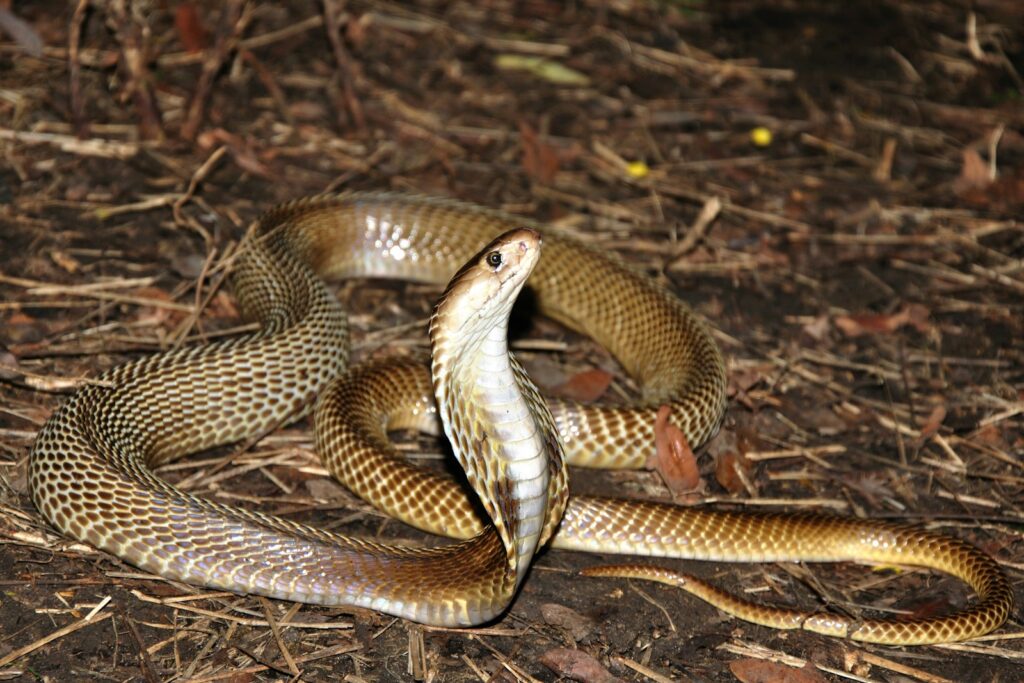
A snake’s head position offers clear indications of its emotional state and intentions. During curious exploration, most snake species hold their heads slightly elevated above the ground, moving deliberately as they investigate their surroundings. This relaxed, forward-oriented head posture suggests comfort and interest in the environment. In contrast, a cautious or threatened snake often raises its head higher, pulling the neck into an S-shape ready to strike if necessary. This defensive posture creates distance between the snake and the perceived threat while preparing for a potential strike. Some highly defensive species may even exhibit a characteristic “periscope” position, where they raise a significant portion of their body vertically to gain a better view of potential threats. The angle between the head and neck can also reveal much—a severe angle often indicates tension and wariness, while a gentler curve suggests relaxed curiosity.
Eye Behavior and Pupil Dilation

While snake eyes lack the expressive quality of mammalian eyes, they still provide valuable behavioral cues when observed carefully. A curious snake typically displays normal pupil dilation appropriate for the lighting conditions, with eyes that track movement in a relaxed manner. These eyes appear alert but not fixated intensely on any one object or potential threat. In contrast, a frightened or defensive snake may exhibit more dramatic pupil changes, with some species showing notably constricted or dilated pupils regardless of lighting conditions. Additionally, defensive snakes often stare intently at the perceived threat with minimal blinking, tracking movement with sharp, focused attention rather than casual observation. Some species even exhibit subtle color changes around the eye area when stressed, though this requires experienced observation to detect. Regular observation of your snake’s typical eye behavior establishes a baseline for recognizing changes that might indicate stress or fear.
Breathing Patterns and Respiratory Changes

A snake’s respiratory rate can provide valuable insight into whether it’s curiously exploring or feeling threatened. During relaxed, curious exploration, snakes maintain a steady, normal breathing pattern that’s barely perceptible to the observer. This regular breathing indicates comfort and a lack of stress as the animal investigates its surroundings. When frightened or defensive, however, many snakes display noticeably altered breathing patterns—their respiration may become rapid and shallow, or they might take deep, exaggerated breaths that visibly expand their bodies. Some defensive snakes may even engage in dramatic respiratory displays like the loud hissing exhibited by corn snakes, pine snakes, and bull snakes when they feel threatened. Particularly stressed individuals might exhibit mouth-gaping during breathing, a concerning sign that the animal is experiencing significant distress and potential respiratory distress. Recognizing these breathing changes allows owners to respond appropriately before minor stress escalates to harmful levels.
Muscle Tension and Body Rigidity
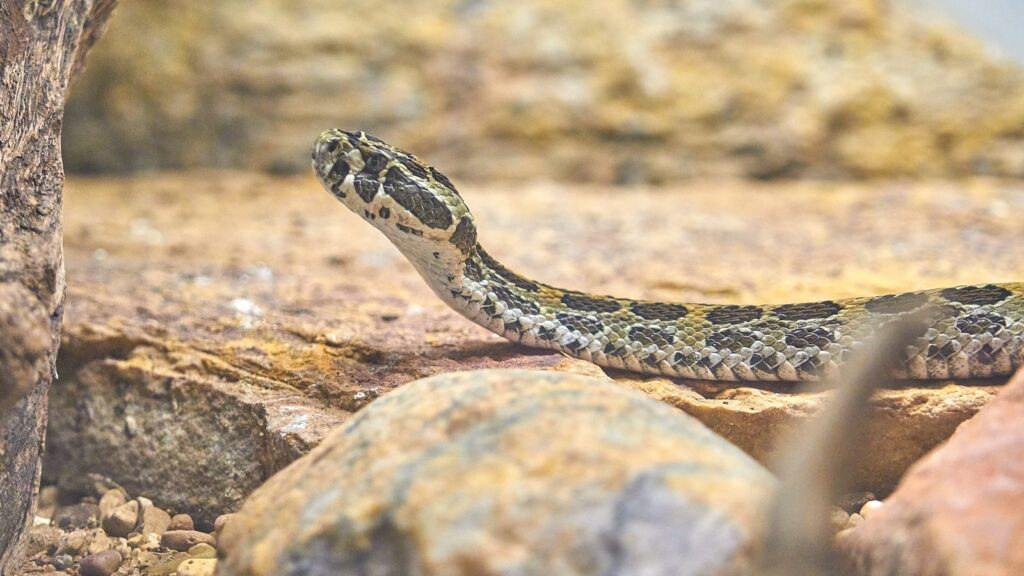
The level of muscle tension throughout your snake’s body provides immediate clues about its emotional state. A curious snake maintains relatively relaxed muscles as it explores, creating a smooth, flowing appearance as it moves. This relaxed state allows for the efficient, graceful movement characteristic of comfortable serpents investigating their environment. Conversely, a cautious or frightened snake exhibits noticeable muscle tension throughout its body, creating a rigid appearance even when stationary. This tension manifests as a tightness that runs visibly through the snake’s entire length, preparing it for quick defensive movements if needed. You might notice this tension particularly when handling your snake—a curious, comfortable animal feels supple and relaxed in your hands, while a tense, cautious snake feels stiff and may actively resist handling. Some species even develop visible muscle definition along their bodies when in a defensive state, a physiological response to perceived danger.
Striking Behavior vs. Investigative Tasting
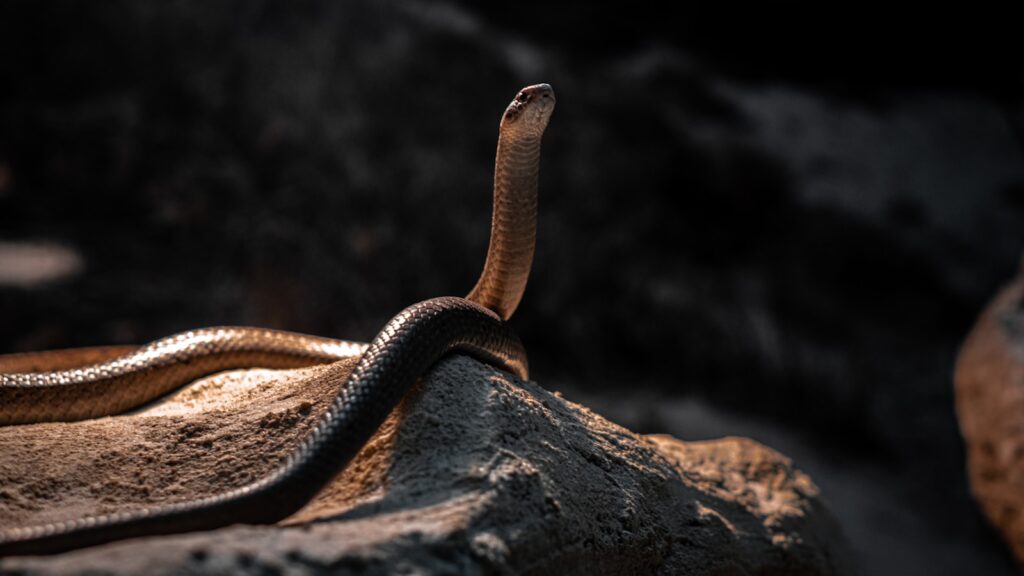
Distinguishing between defensive striking behavior and curious investigative “tasting” is crucial for proper interpretation of snake behavior. When a snake is curiously investigating food or an interesting object, it may gently touch the item with its snout or perform slow, deliberate tongue flicks to gather scent information. This investigative behavior appears methodical and controlled, often accompanied by slight forward head movements as the snake processes sensory input. In stark contrast, defensive striking postures involve the characteristic S-shaped neck coil, intense focus, and much more rapid movements. A defensive strike is typically preceded by clear warning signs like hissing, tail rattling (in some species), or dramatic recoiling of the head and neck region. Even non-venomous snakes may perform “bluff strikes” with closed mouths when feeling threatened, which can be distinguished from feeding responses by their theatrical quality and lack of follow-through.
Tail Positioning and Movement
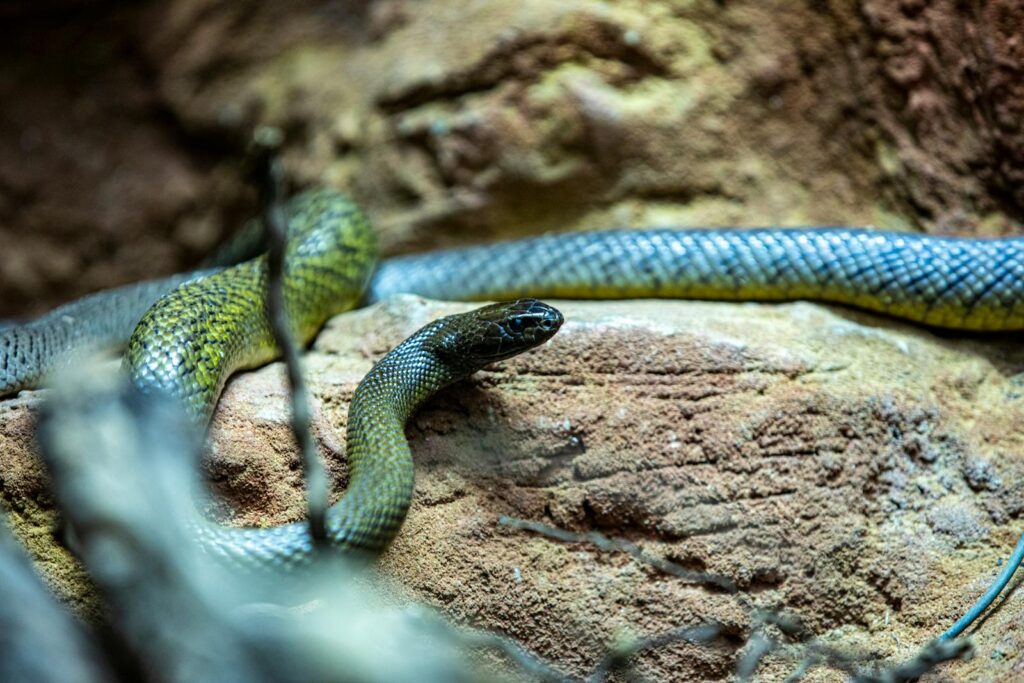
A snake’s tail behavior offers subtle but meaningful insights into its emotional state that many owners overlook. During curious exploration, most snakes maintain relaxed tail positioning that follows the natural curve of their bodies, often with gentle, smooth movements as they navigate their environment. This relaxed tail posture suggests comfort and genuine interest in surroundings rather than defensive vigilance. In contrast, a cautious or threatened snake may display distinctive tail behaviors depending on the species—some vibrate their tails rapidly (an ancestral behavior seen even in non-rattlesnake species), while others may hold their tails in rigid, unnatural positions. Some species like rat snakes may even perform tail displays where they curl their tails into unusual shapes or positions when feeling threatened. Ball pythons might tuck their tails tightly against their bodies when feeling insecure, while curious ball pythons allow their tails to extend more naturally.
Feeding Response vs. Defensive Behavior

Feeding responses can sometimes be mistaken for aggression or defensiveness, making it important to recognize the subtle differences between these behaviors. A hungry snake showing feeding interest typically exhibits focused attention on potential prey items, with deliberate tracking movements and increased tongue flicking directed specifically at the food source. This behavior has a purposeful quality distinct from the generalized defensive postures seen when a snake feels threatened. During feeding response, many snakes display a characteristic “focus lock” where their attention narrows exclusively to the prey item, sometimes accompanied by subtle mouth movements or jaw adjustments in preparation for striking. Defensive behavior, by contrast, typically involves more generalized awareness of the entire environment, with the snake’s attention divided between multiple potential threats rather than focused on a single object. The body language during feeding responses also tends to be more controlled and precise, lacking the exaggerated defensive displays designed to intimidate predators.
Species-Specific Indicators of Curiosity and Caution
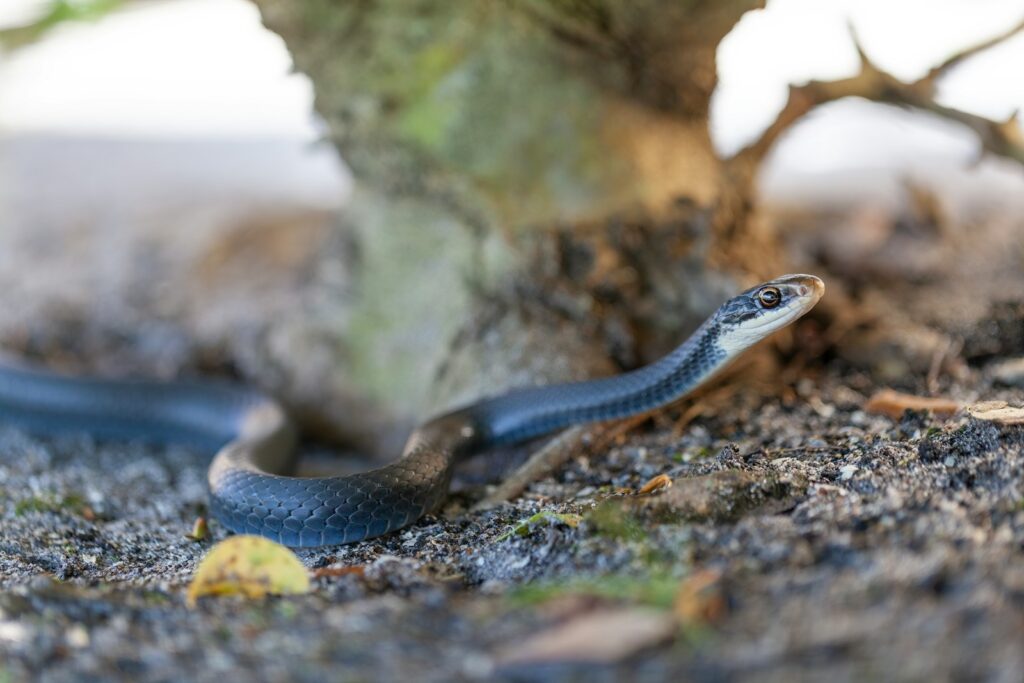
Different snake species display curiosity and caution in ways unique to their evolutionary history and natural behaviors. Ball pythons, for instance, express curiosity through slow, methodical movements with frequent pauses and a gently extended head, while their defensive behavior typically involves tight coiling with the head tucked protectively beneath body coils. Corn snakes often demonstrate curiosity by actively climbing and exploring vertical spaces with relaxed movements, while their defensive display might include tail vibrating against substrate to create warning sounds. Boa constrictors show curiosity through slow, tongue-directed investigation with relaxed neck positioning, contrasting with their defensive behavior of inflating their bodies to appear larger while hissing loudly. King snakes display curiosity through persistent exploration of enclosed spaces and edges, while their defensive repertoire includes the distinctive triangulation of the head and dramatic body rolling. Understanding these species-specific behaviors is essential for correctly interpreting your particular snake’s emotional state.
Environmental Factors Affecting Snake Behavior
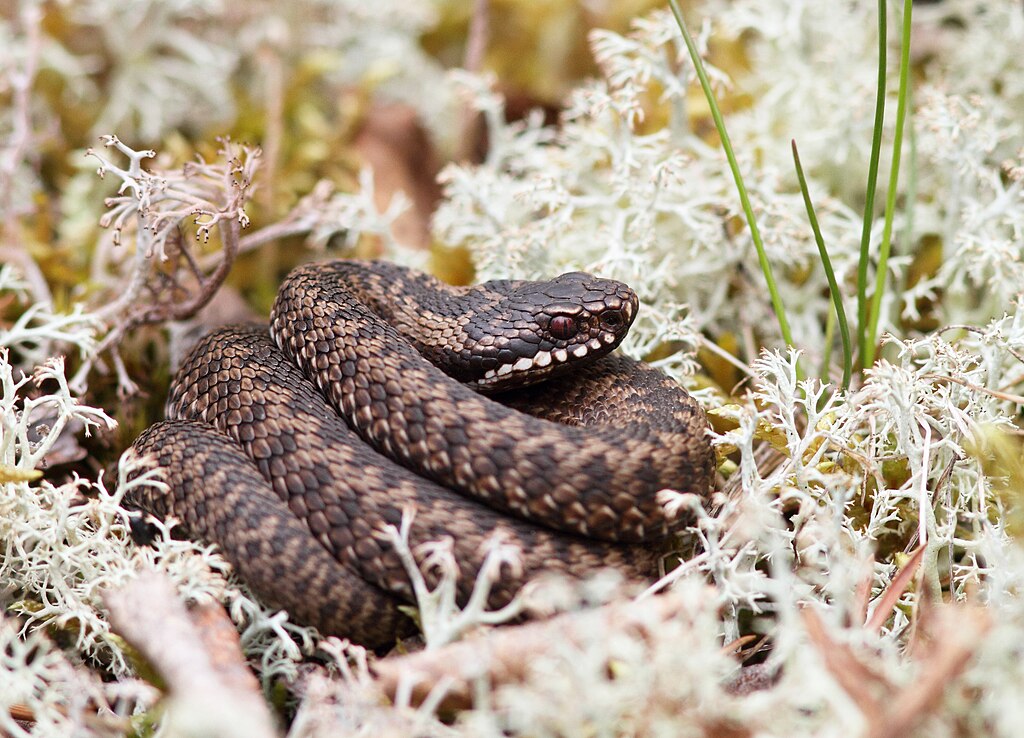
Environmental conditions significantly influence whether your snake displays curious or cautious behavior, often regardless of its temperament. Improper temperature gradients can dramatically alter behavior, with too-cold conditions typically resulting in sluggish movement that might be misinterpreted as caution, while overheated snakes may appear unusually active or agitated. Humidity levels outside the appropriate range for your species can create similar behavioral changes, potentially triggering stress responses that mimic defensive behavior even in typically docile individuals. The enclosure’s lighting cycle affects activity patterns substantially, with sudden light changes often triggering startle responses that appear as defensive behavior. Even barometric pressure changes before storms can alter snake behavior, with many keepers reporting increased defensive posturing or hiding behaviors in their animals during weather transitions. Understanding how these environmental factors affect your specific species allows you to distinguish between true caution and environmentally-induced behavioral changes.
Building Trust: Responding to Snake Body Language
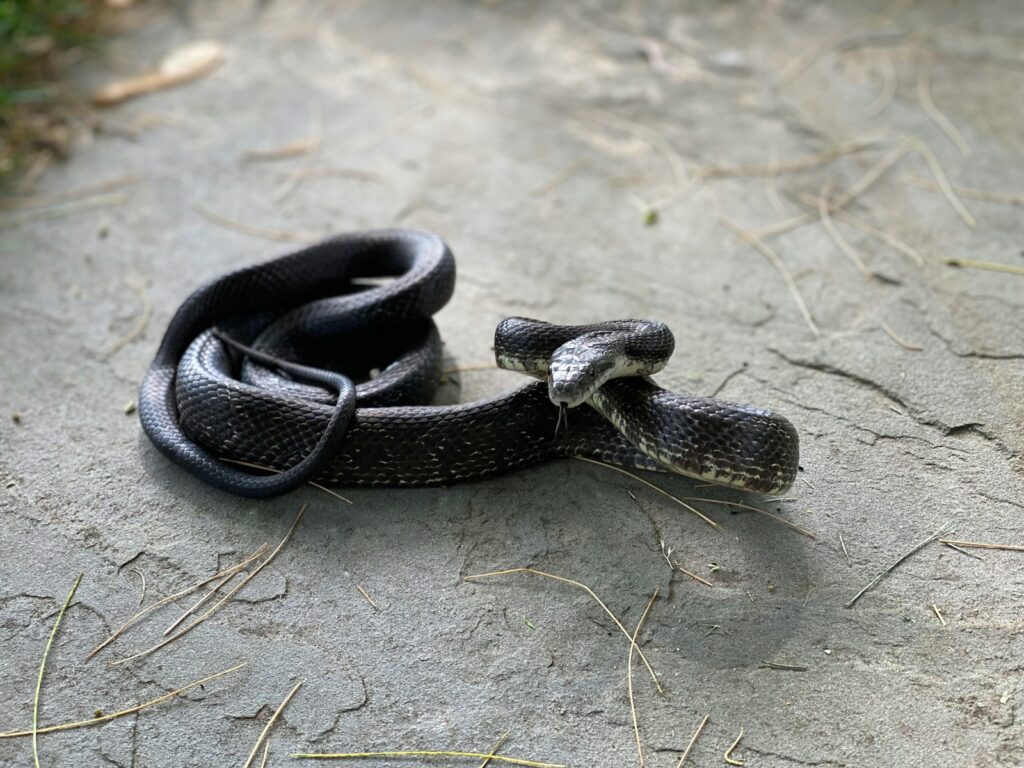
Responding appropriately to your snake’s body language is essential for building trust and encouraging curious rather than cautious behavior over time. When your snake displays defensive posturing, giving it space and avoiding sudden movements helps reduce its stress and prevents reinforcing fearful associations. Conversely, when your snake shows curious exploration, maintaining calm, predictable movements around its enclosure rewards this positive behavior without interrupting its investigation. Establishing consistent handling routines where you approach from angles visible to the snake (rather than from above, mimicking predator approaches) helps build positive associations with human interaction. Using proper support techniques when handling—never grabbing the middle of the body or restricting movement—communicates safety to your snake through physical security. Over time, this responsive approach to your snake’s communication creates a positive feedback loop where the animal learns that its signals are respected, encouraging more frequent displays of curiosity and fewer defensive reactions.
Understanding the subtle differences between curiosity and caution in your snake’s behavior creates a foundation for a healthier relationship with your reptilian companion. By observing body posture, movement patterns, tongue flicking, and other behavioral cues discussed in this guide, you’ll develop an intuitive sense of your snake’s emotional state. This knowledge not only enhances your bond with your pet but also improves its overall wellbeing by reducing unnecessary stress. Remember that each snake is an individual with unique personality traits, and learning your specific animal’s behavioral baseline takes time and patience. With consistent observation and thoughtful responses to your snake’s communication attempts, you’ll foster an environment where curiosity flourishes and defensive behaviors diminish, creating a more rewarding experience for both you and your scaly friend.

